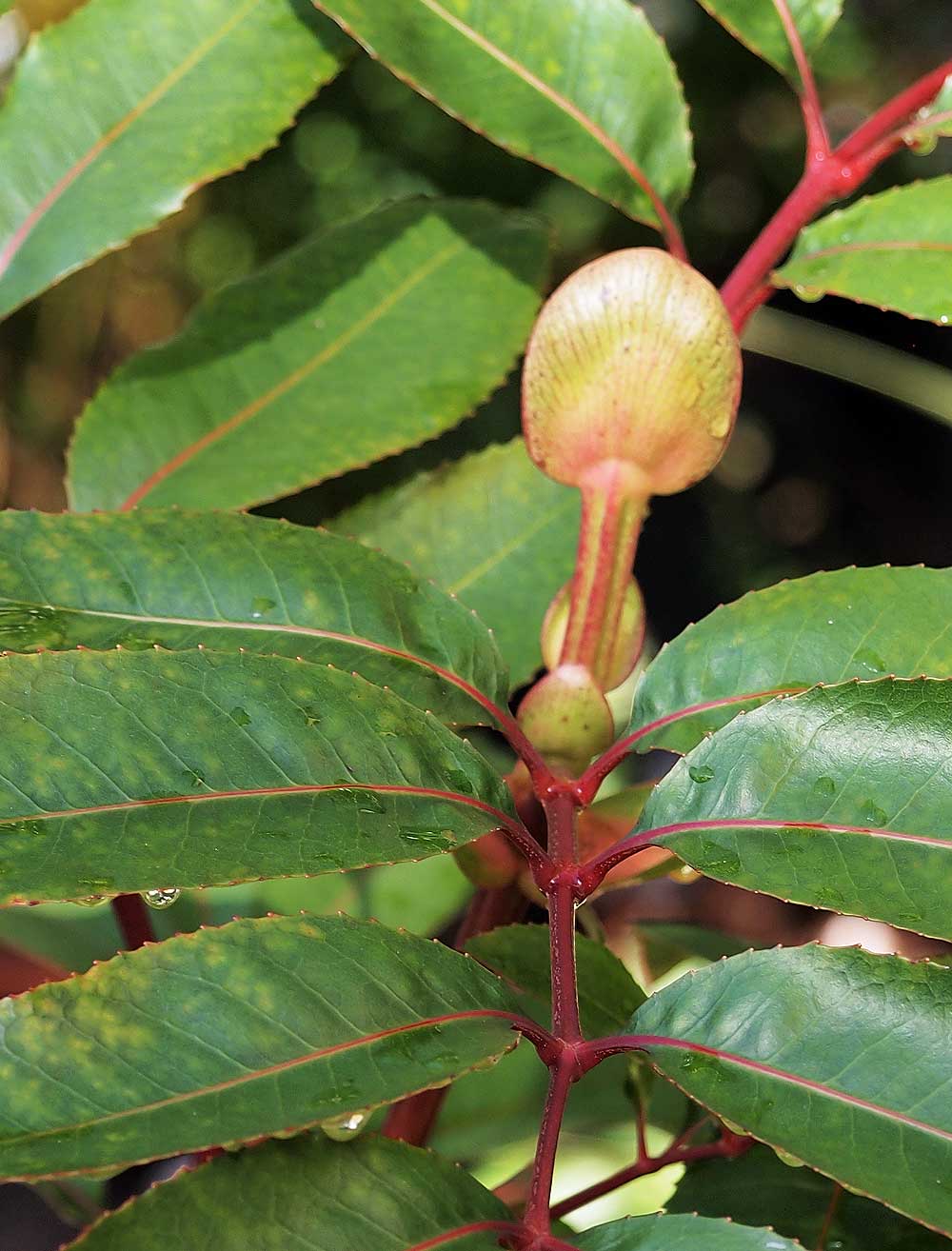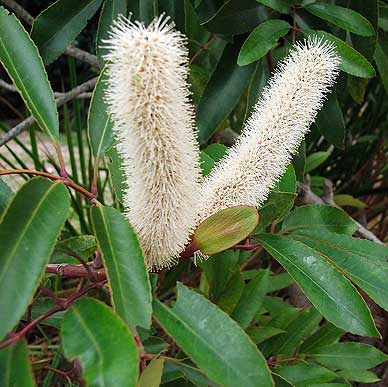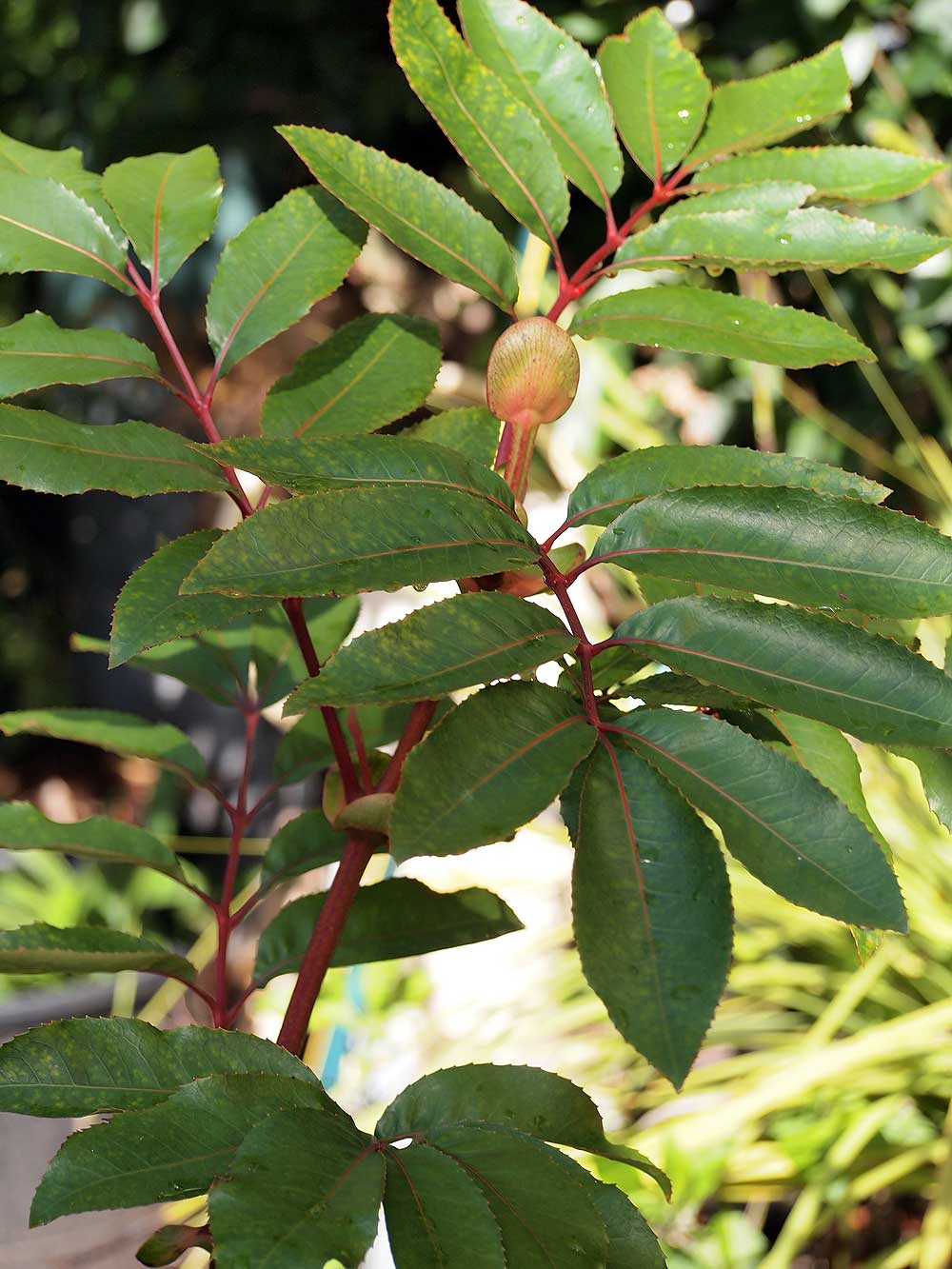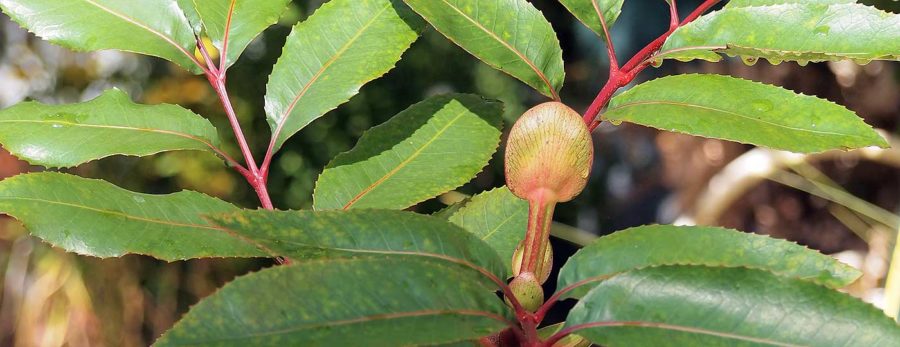
Stipule of Cunonia capensis, Butterknife Tree.
Some leafstalks are marked by outgrowths at the base, usually on opposite sides. These were named stipules by Linnaeus, from the Latin word stipula, meaning “straw” or “stalk.” Not all plants have stipules, and among those that do, they vary greatly in appearance “and might appear as glands, scales, hairs, spines, or laminar (leaf-like) structures.” The remarkable, conspicuous stipules of Cunonia capensis, the African Red Alder, or Butterspoon or Butterknife Tree, are a focal point in the garden, almost always remarked upon by people who see them for the first time. The paired stipules are reddish in color and pressed together like cupped hands — or like butterspoons, I guess, whatever those are. (I say “butterknife” rather than “butterspoon.” I can see how the stipules are spoonlike, but I don’t apply my butter with a spoon, do you?)
An evergreen multistemmed perennial shrub or small tree from South Africa, this is one of my favorite specimen plants. I used to have several that I lost in our severe, years-long drought. The plant doesn’t need constant water, but it doesn’t like being dry, and I was careless (or all too responsible a California citizen). It also dislikes heat, and I’m now growing this one in a large container in part shade. While the tree can reach thirty feet in damp forests, it is seldom seen above fifteen feet in the open. Several sources report that it can be kept for many years in a container, and this has been my experience. It grows in zones 9–11 and prefers good drainage.
Alice Aubrey, of the Walter Sisulu National Botanical Garden, notes on the South African National Biodiversity Institute website that “The genus Cunonia is named after John Christian Cuno who in the 18th century published a book of verse about his garden in which many exotic plants were growing. The specific name, capensis, means “of the Cape.” And naturewatch.org reports that “Cunonia capensis naturally ranges from Cape Town and the Western Cape of South Africa, eastwards all the way to Swaziland and southern Mozambique. It typically grows in the indigenous Afromontane forests of Southern Africa, and especially beside rivers. In its distribution it greatly favours moist spots or areas with high rainfall. It grows well both in the sun and in the shade, and it can be planted near to buildings because it has a gentle, non-invasive root-system.”

Cunonia capensis flowers, Cape Town, South Africa. Photo by Abu Shawka, via Wikimedia Commons. My plants have not yet flowered.
The structure and foliage are also attractive. The leaves are pinnate, and new growth tends to be bronze, while old leaves are a deep lustrous green. The stems are a wine-red color. The plant is prized for showy, fragrant, bottlebrush-like flowers that attract butterflies, garden birds and honey bees. Aubrey says that “The showy, scented flowers appear from February to May and are carried in dense, creamy spikes which have a bottlebrush-like appearance, and attract insects.” But Kelly Kilpatrick, horticulturalist at Annie’s Annuals, says that the flowers “appear in summer.” She adds that the plant “may take a few years to flower, but be patient & the foliage alone makes it work [she must mean “worth”] growing anyway.” Mine have never flowered, but I still love this plant.
I bought mine as small plants in four-inch pots from Annie’s, but Cunonia is fast growing — it is said to be one of the fastest growing of South Africa’s forest trees — and often grown from seeds.
There are good pictures at the Urban Forest Ecosystems Institute and at Dave’s Garden. (Below is another of mine.)

Cunonia capensis, Butterknife Tree.
